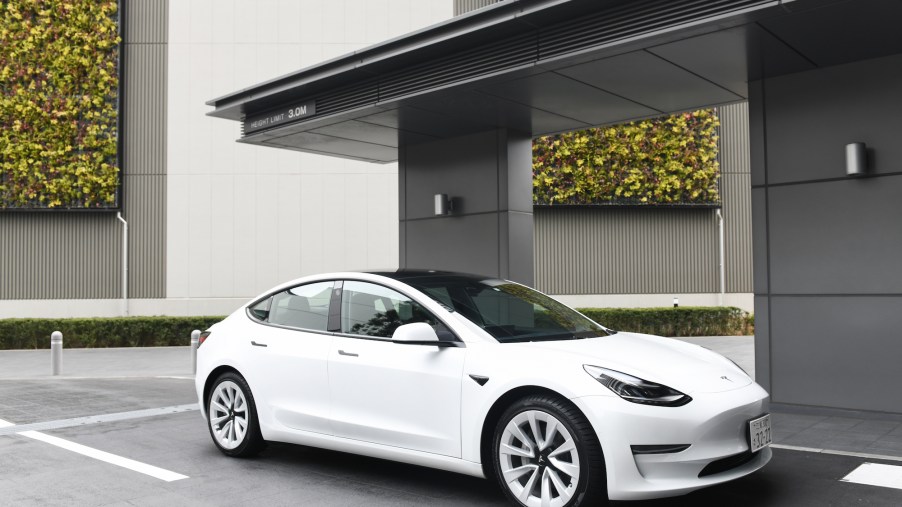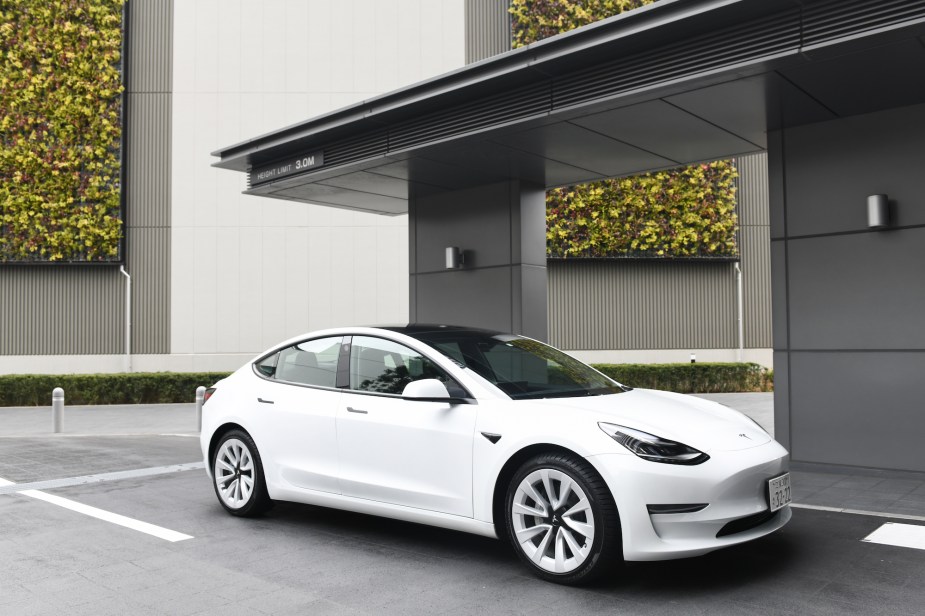
Is the Nissan Leaf More Efficient Than the Tesla Model 3? Here’s What 1 Study Found
Electric vehicles (EVs) have improved immensely over the last decade, with many providing eco-conscious commuters a break from range anxiety with faster charging and higher capacity battery packs. While the Tesla Model 3 enjoys popularity, it has taken the focus off other examples in the EV segment, namely the Nissan Leaf. With an EPA-rated efficiency of 111 MPGe, it’s middle-of-the-road in efficiency, far below the Tesla but way above the 2021 Ford Mustang Mach-E GT’s 84 MPGe.
How does the Nissan Leaf compare to the Tesla Model 3?

EV buyers are obsessed with range figures, but rightfully so. Recent figures from the U.S. Environmental Protection Agency (EPA) show that the 2021 Tesla Model 3 Standard Range Plus RWD stands at the top of the efficiency range, boasting a combined 142 MPGe—the electrical equivalent of a gallon of fuel.
Although charging stations are becoming more widespread, they don’t enjoy the availability gas stations have. Consequently, the more expensive Tesla Model 3 with the long-range battery pack is advertised to give 353 miles per charge, according to Kelley Blue Book (KBB).
With the Nissan Leaf, it has served as a bargain entry point into the EV lifestyle for over a decade. As one of the EV pioneers, the car has come a long way from its original 73-mile range and can now go a distance of 150 miles. According to Kelly Blue Book, the Leaf Plus, with a quite impressive 200 hp, can last 226 miles on a single charge.
The Leaf is cheaper with a starting MSRP of $37,400 compared to the Model 3 starting at $46,990. However, Edmunds reports that the Tesla gives you much more in creatures comforts, general tech, and safety equipment compared to the Leaf.
Yet, if you’re motivated to buy for efficiency, these ratings may not accurately represent real-world circumstances. One recent study proves that.
Testing mile per kWh versus MPGe
EV testing and analysis firm Recurrent crunched the numbers on a set of 99 cars—half Tesla Model 3s and half Nissan Leafs—and their 500,000 data points of efficiency metrics were logged between November 2021 and March 2022. Using an EPA figure-based mile per kWh (mi/kWh) measurement as opposed to MPGe, the Tesla range was calculated from 3.33 to 4.17 mi/kWh, and the Nissan Leaf was 2.94 to 3.45 mi/kWh. Therefore, even bargain standard Model 3s will achieve greater road efficiency than the best Leaf.
However, the EPA ratings weren’t what was measured when real-world driving conditions were considered. Over the four-month timeframe, Recurrent revealed the median observed efficiency for each vehicle as the Tesla Model 3 having 3.39 mi/kWh and the Nissan Leaf having 3.71 mi/kWh.
EV real-world efficiency
The most important finding from Recurrent’s study outlines how driver behavior affects fuel efficiency.
Since the Nissan Leaf was early in the EV game and drivers acclimated to getting the most out of their 70-or-so-mile range and only enjoy twice that now, they maximized their vehicle capabilities and drive more cautiously the report states. On the other hand, Tesla drivers accelerate quickly more often. But with a 0 to 60 time in the mid-three-second range, how could they be blamed?
The study also noted that Tesla drivers are more prone to “expect comfort” when they drive, meaning utilizing climate control settings, which lowers efficiency. Leaf drivers reportedly “see their cars as an extension of their values” and pay attention to the utility and efficiency of what they operate.
What does this mean for EV drivers?
For EV efficiency, it isn’t simply an equation of distance and power output done by bureaucrats. The trappings of luxury like air conditioning, onboard tech, and powerful motors show that it may not be the inherent quality of the object that dictates efficiency but the individual user. In other words, it can be complicated and vary.
Driving fast is nearly a cultural acceptance for Tesla owners. If you own a Tesla Model 3, or any Tesla for that matter, you know you can blitz anyone off the line outside an official NHRA event. However, if you own a Nissan Leaf nowhere, at no time, do you daydream about launching your EV from stop light to stop light.


